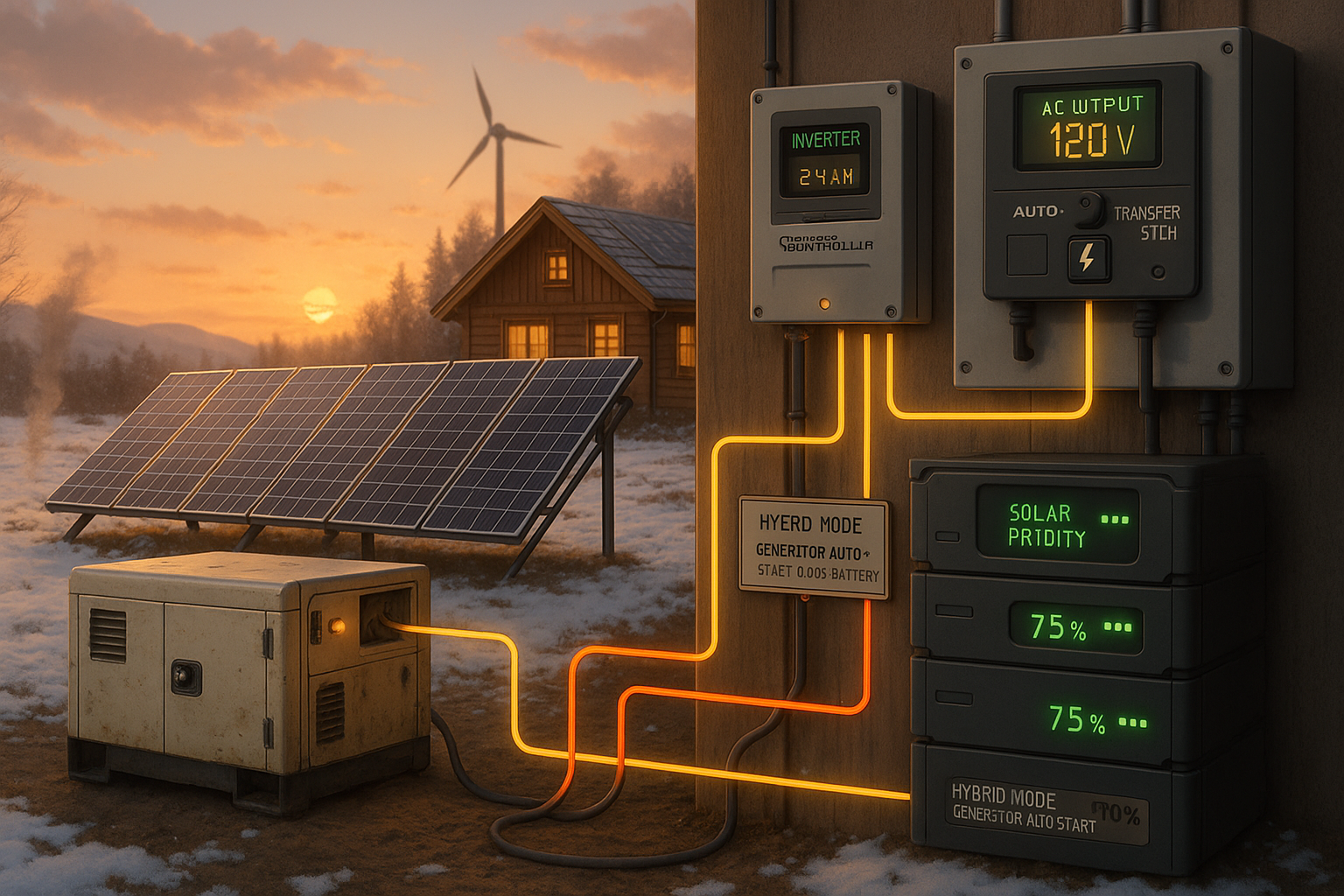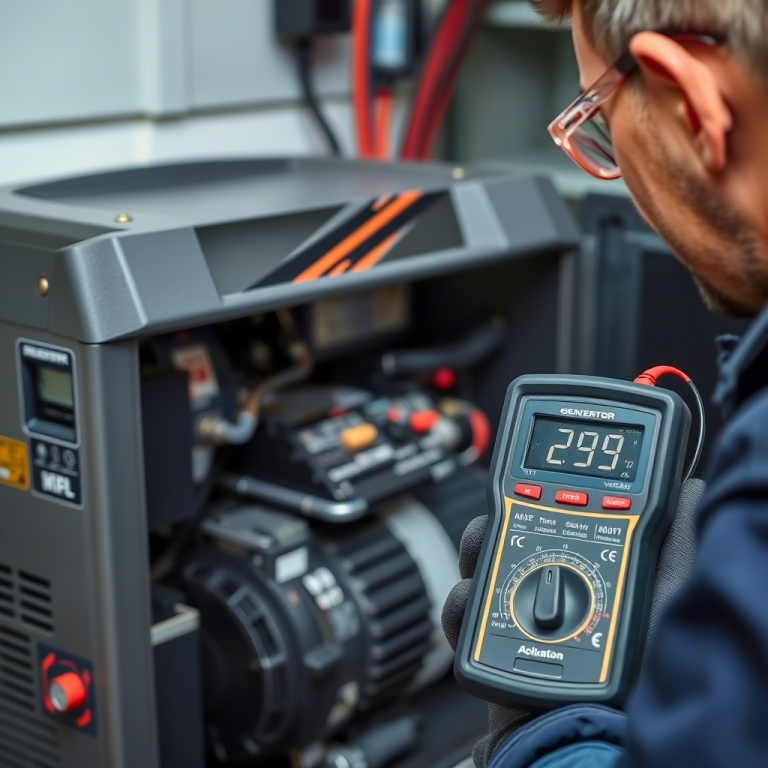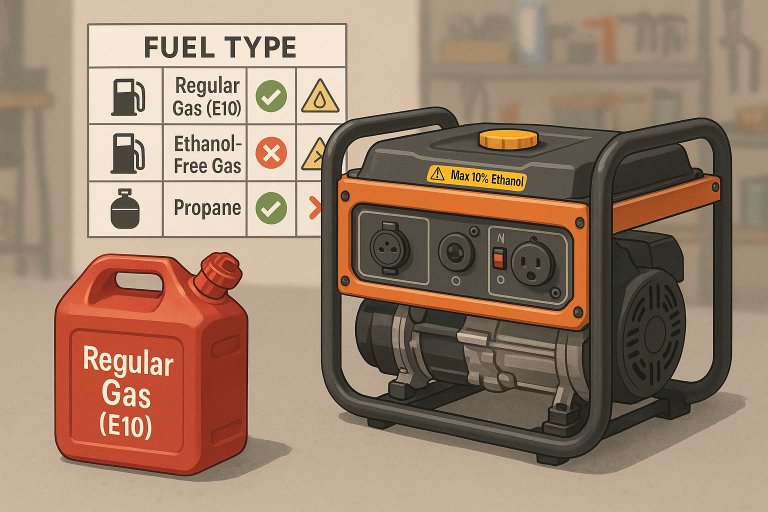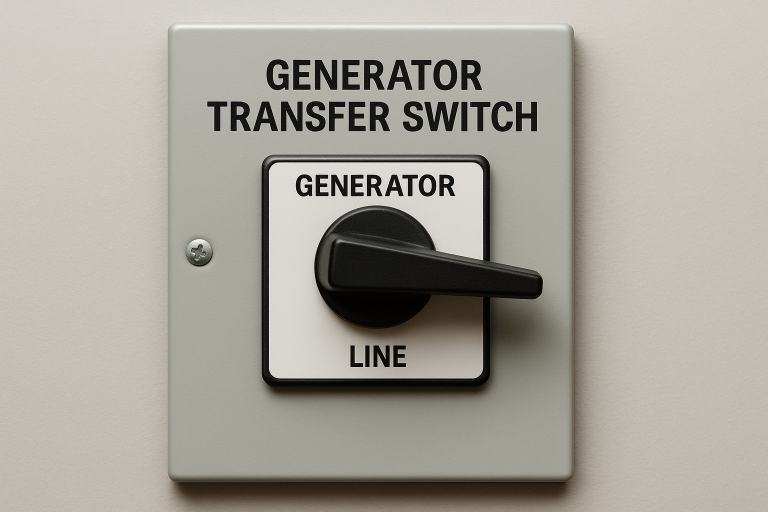Can You Combine Solar Panels with a Generator? Hybrid Setup Tips
Yes, you can absolutely combine solar panels with a traditional generator—and doing so creates a resilient, cost-effective energy system that leverages the best of both technologies. While solar panels provide clean, renewable energy, generators offer reliable backup during low-sunlight periods. This hybrid approach ensures uninterrupted power while slashing fuel costs and environmental impact .
How Hybrid Solar-Generator Systems Work
Unlike standalone systems, hybrids intelligently integrate solar and generator power through automated controls:
- Solar as Primary Source: Solar panels convert sunlight to DC electricity, which charges batteries via a charge controller. An inverter then converts stored DC power to AC for household use .
- Generator as Backup: When battery levels drop (e.g., during storms or nighttime), the system automatically starts the generator to recharge batteries or power loads directly .
- Smart Energy Management: Advanced controllers prioritize solar power, minimize generator runtime, and optimize battery usage. For example, excess solar energy can even recharge generator-connected batteries during low-demand periods .
Critical Note: Never connect solar panels directly to a generator. Mismatched currents (DC vs. AC) and voltage incompatibilities require intermediary components .
Top Benefits of Hybrid Solar-Generator Systems
1. Uninterrupted Power Supply
- Solar handles daytime loads, while generators cover nighttime, cloudy days, or peak demand. Ideal for areas with unreliable grids or extreme weather .
- Real-World Example: Hospitals and data centers use hybrids to ensure 24/7 uptime for critical operations .
2. Cost Efficiency & Fuel Savings
- Solar reduces generator runtime by 50–90%, slashing fuel costs. For instance, POWR2’s hybrid systems cut diesel consumption by up to 80% on construction sites .
- Long-Term Savings: Though initial costs are higher, reduced fuel/maintenance expenses typically yield ROI within 5–10 years .
3. Environmental Impact Reduction
- Hybrid systems lower CO₂ emissions by 60–90% compared to generator-only setups. For example, pairing diesel generators with batteries avoids 4,500 kg of CO₂ per week .
- Noise pollution drops significantly, as generators run less frequently and often during daytime hours .
4. Enhanced Equipment Longevity
- Reduced generator runtime means less wear and tear, extending lifespan by 30–50%. Solar components (with no moving parts) require minimal maintenance .
5. Energy Independence & Grid Resilience
- Off-grid cabins, farms, and remote sites gain self-sufficiency. Hybrids also provide backup during grid outages, unlike grid-tied solar systems that shut down during blackouts .
Key Components for a Hybrid Setup
| Component | Role | Critical Specifications |
|---|---|---|
| Solar Panels | Generate DC electricity from sunlight | Match voltage to battery bank (e.g., 12V/24V/48V) |
| Charge Controller | Regulates solar input to prevent battery overcharging | MPPT type (30% more efficient than PWM) |
| Battery Bank | Stores excess solar energy for later use | Lithium-ion (e.g., LFP) for longevity/deep cycles |
| Inverter | Converts DC battery power to AC for appliances | Pure sine wave; match wattage to total loads |
| Backup Generator | Provides power when solar/batteries are insufficient | Compatible with auto-start signals from controllers |
| Transfer Switch | Automatically shifts between solar and generator power | Essential for seamless backup |
Practical Applications & Use Cases
- Residential Homes: Power essential appliances (fridge, lights, HVAC) during outages. A 10kWh system (e.g., EcoFlow DELTA Pro) can run a 2,000 sq. ft. home for 12–24 hours .
- Off-Grid Cabins: Solar handles daily needs, while generators backup extended cloudy periods.
- Construction Sites: Hybrids like Fuelfix’s HESU30 cut diesel use by 80% while meeting noise regulations .
- Agriculture: Solar powers irrigation pumps; generators cover peak demand.
Installation Costs & Financial Incentives
- System Costs: Vary by scale:
- Small home: $5,199 (6kWh battery + 7.2kW inverter) .
- Large home: $24,000 (36kWh battery + 21.6kW inverter) .
- Savings Drivers: Reduced fuel consumption, grid independence, and tax credits (e.g., 30% U.S. federal solar tax credit).
- Payback Period: Typically 4–8 years for residential systems .
Critical Setup Tips
- Size Components Correctly:
- Calculate daily energy needs (kWh) and peak loads (Watts). Oversize solar by 20% to cover inefficiencies.
- Match generator capacity to high-watt appliances (e.g., well pumps or AC units).
- Prioritize Compatibility:
- Use generators with “auto-start” capabilities triggered by battery monitors.
- Ensure inverters synchronize phase/timing with generator output .
- Optimize for Efficiency:
- Program generators to run only during battery recharge cycles (e.g., when batteries hit 30% capacity).
- Use smart controllers like EcoFlow’s Smart Home Panel 2 to avoid peak grid rates .
- Maintenance Essentials:
- Clean solar panels biannually.
- Service generators annually (oil/filter changes) .
The Future of Hybrid Systems
Innovations like AI-driven energy management and modular “stackable” batteries (e.g., EcoFlow DELTA Pro Ultra) are making hybrids more accessible. Regulatory support is also growing—the EU now prioritizes hybrid permits to accelerate renewable adoption .
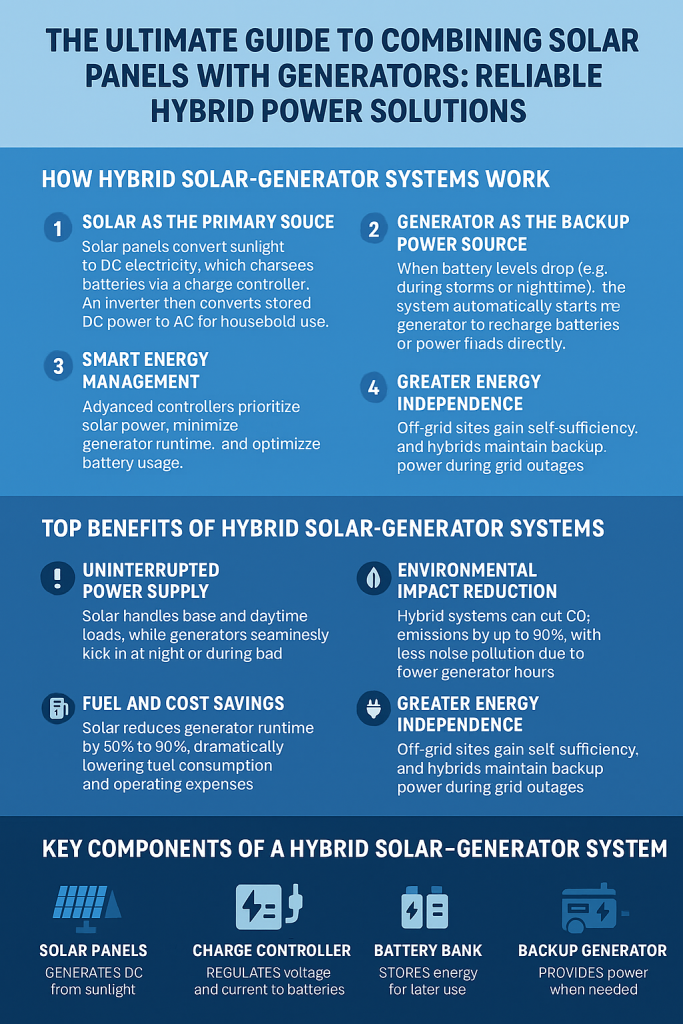
Is Hybrid Solar-Generator Worth It?
Combining solar panels with a generator delivers unmatched reliability, sustainability, and long-term savings. By leveraging solar for daily needs and generators for backup, users gain energy security without compromising environmental goals. For optimal results:
- Work with certified installers to design your system.
- Explore incentives like tax credits and grants.
- Start with a scalable system that grows with your needs .
Hybrid energy isn’t just a backup plan—it’s a smarter, cleaner way to power our lives.

